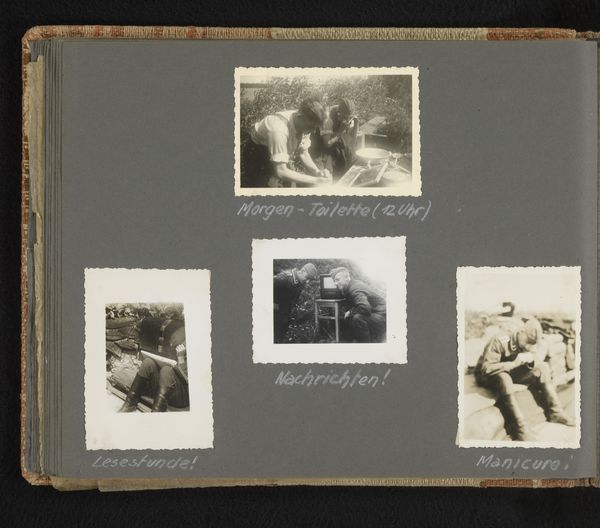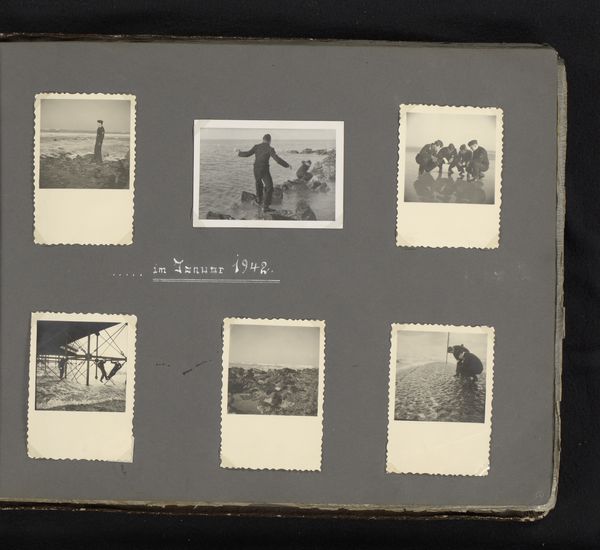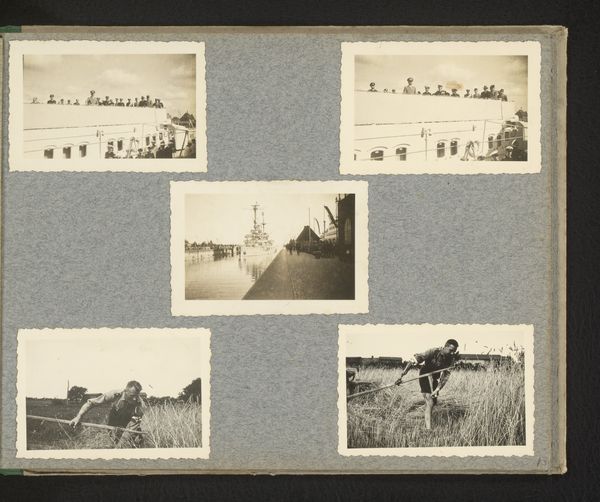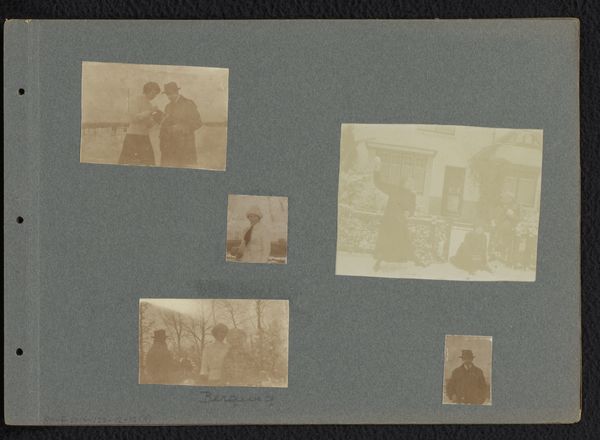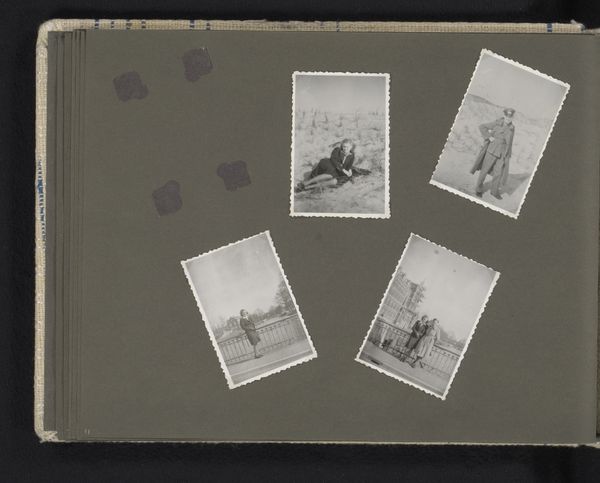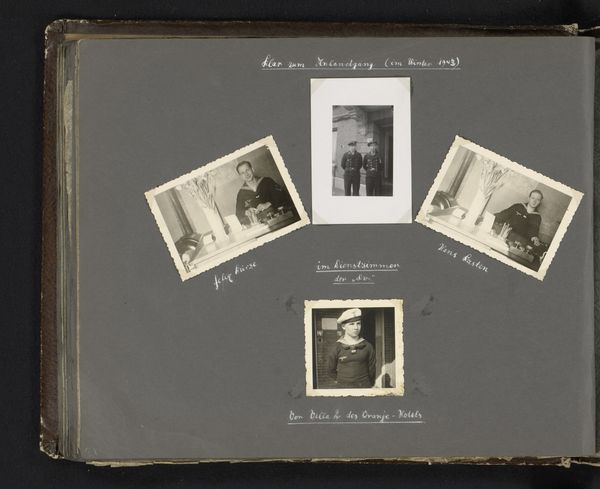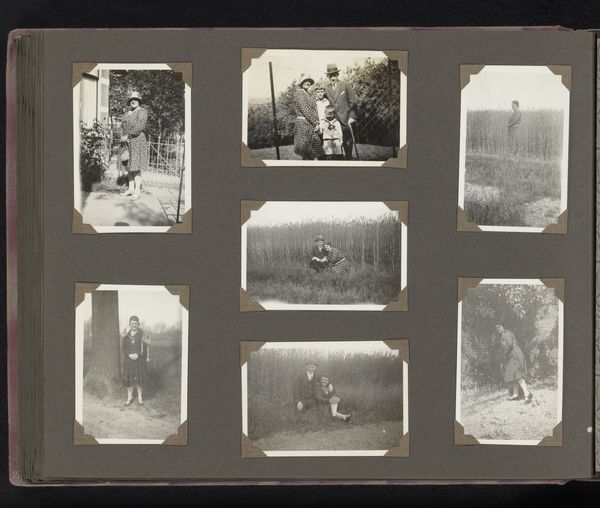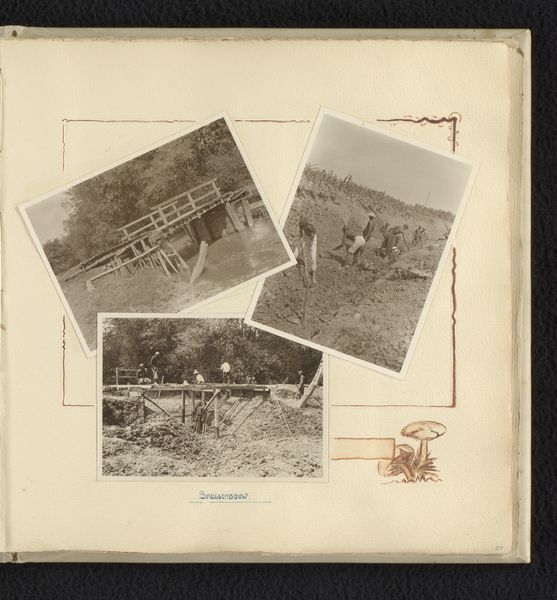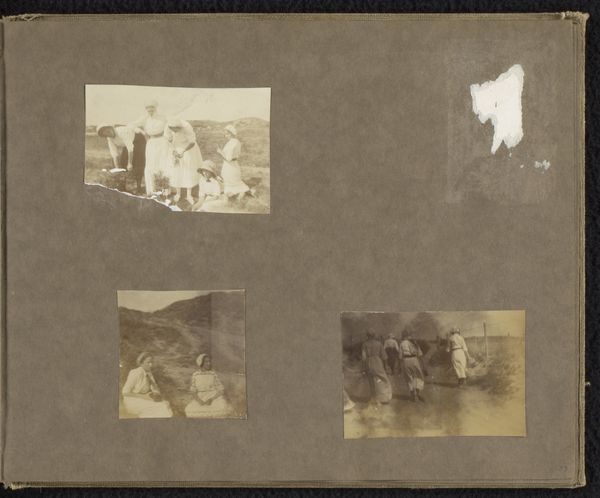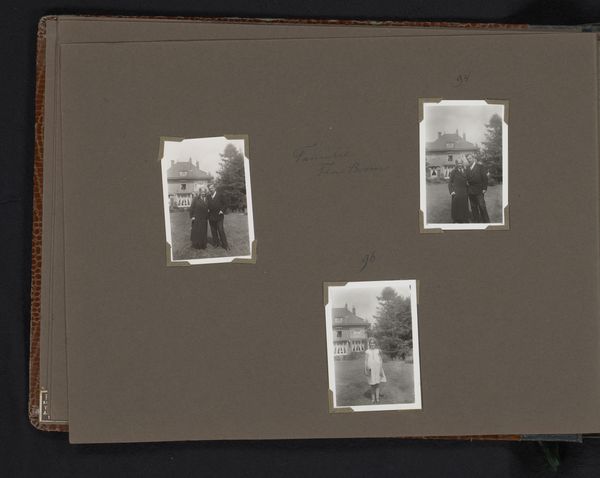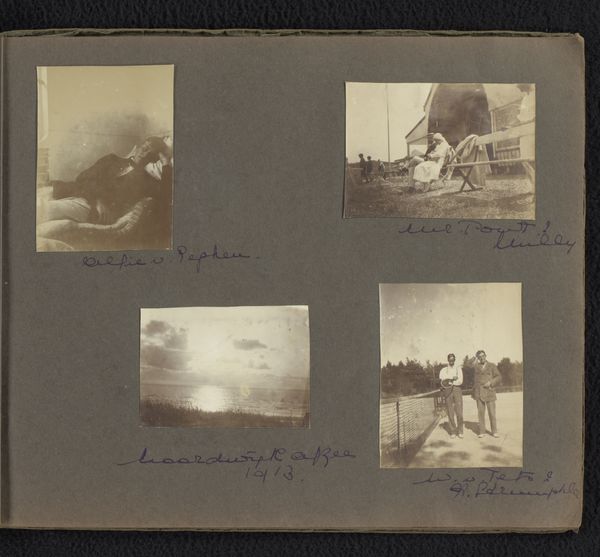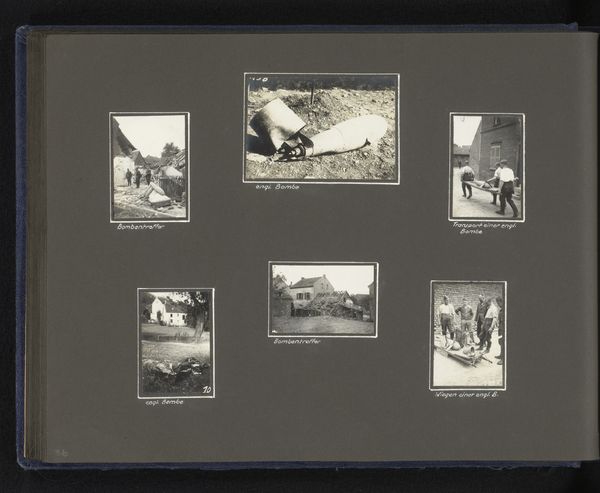
photography, gelatin-silver-print
#
landscape
#
photography
#
gelatin-silver-print
Dimensions: height 135 mm, width 85 mm, height 272 mm, width 340 mm
Copyright: Rijks Museum: Open Domain
Curator: So, this photograph album page, "Kriegsmarine aan het strand van Scheveningen," taken in 1942, presents a series of gelatin silver prints mounted on a dark album page. The grainy texture gives it such a stark quality. What strikes you most about this object? Editor: Well, first of all, the collection of snapshots on this page looks so ordinary at first glance. It feels almost…domestic, which feels so strange considering it depicts German Navy members on a beach during the Second World War. What is interesting to you in this piece? Curator: It's fascinating how seemingly mundane snapshots become charged with meaning when we consider the context of their production and circulation. Look closely at the gelatin silver prints; the labor involved in their making and development, the specific chemical processes. Photography at this time was both a technology of control and a means of personal documentation. Editor: So, by focusing on the materials and processes, you’re saying we can see how photography itself became a tool within a larger political machine? Curator: Exactly. These aren't just images; they are objects produced through specific means, disseminated for particular purposes, be that personal memory or state propaganda. The paper, the chemicals, the photographer’s labor – it all speaks to a network of production deeply embedded in the war effort. The act of picturing became a type of wartime activity and also suggests consumption of war effort in terms of materials at play. Editor: I never thought about how even casual photographs required an entire industry during wartime. It's like the photo is the end product of so much labor and resources, some of which would have likely been restricted in wartime! Curator: Precisely. Considering its production allows us to critically examine photography's role, both as an aesthetic medium and a cog in the larger war machine. Editor: I learned something new today! Looking closely at process and materials really changed my perspective!
Comments
No comments
Be the first to comment and join the conversation on the ultimate creative platform.

